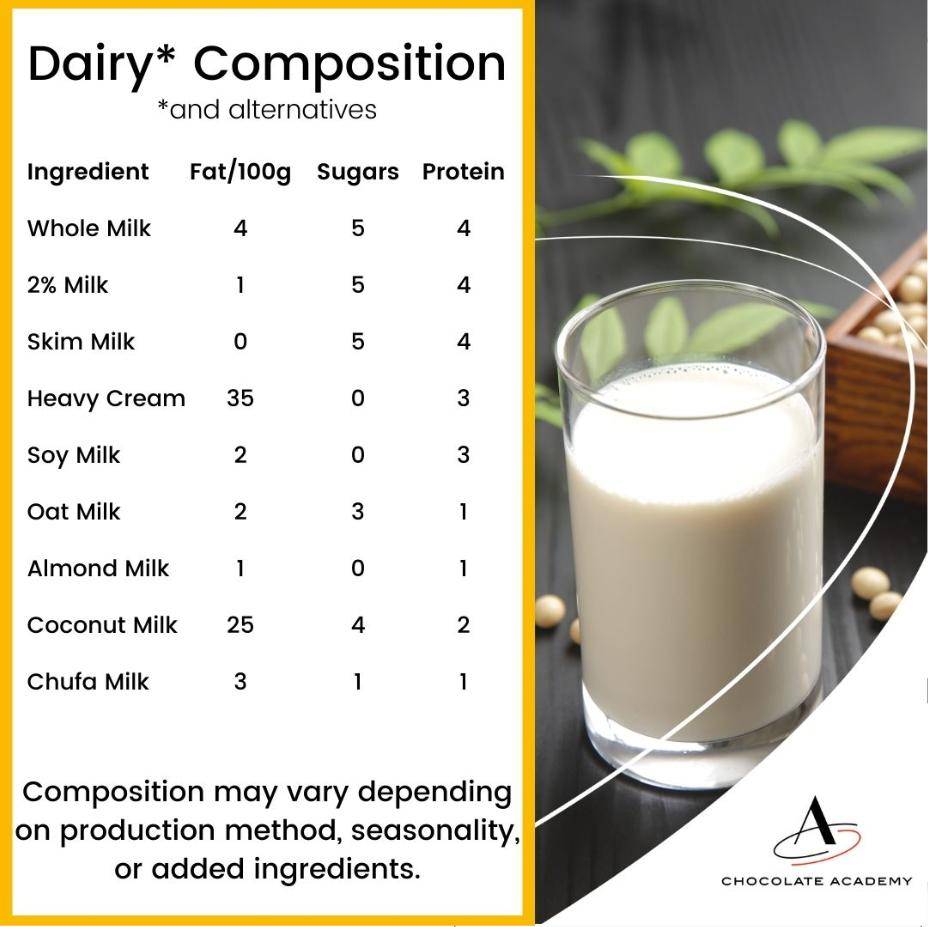Chufa for Plant-Based Desserts and Confections
Chufa for Plant-Based Desserts and Confections

Plant-based foods are a trend that’s here to stay. Today’s consumers are looking to avoid animal-based products while boosting their health and treading lightly on the planet. In fact, 56% of centennials say they eat vegan at least once a week*. And Innova Market Insights identified “Shared Planet” and “Plant-Based” as the number 1 and 2 top trends for 2022.
Plant-based ingredients have become extremely popular and widely available, but if you’ve worked on transforming your own recipes, you’ve realized that substituting a plant-based ingredient for a conventional one isn’t straightforward; moreover, it’s only part of the equation. Your most popular items probably have several ingredients, many of which are crucial to achieving the texture and flavour your customers expect.
Let’s take a look at an ancient ingredient that’s just recently arrived on the plant-based alternative ingredient scene. What is Tiger Nut, and how can it help you meet your customers’ needs for delicious, good-for-them chocolate treats?

What is Chufa or Tiger Nut?
Tiger Nut is not a nut at all; it's a tuber, not something we think of as a "sexy" ingredient. But this humble, wrinkly little cousin of potatoes and sunchokes is one of the best things to happen to the confectionery industry as we seek new ways to offer customers products that are good for them and the environment.
Tigers nuts have been cultivated for millennia; some sources claim that Tiger Nut (aka Chufa or Earth Almond) made up 80% of our Paleo ancestors' diets. Given the nutritional benefits of Tiger Nut, it's not surprising that its popularity is on the rise. It is high in prebiotic starch and fibre and rich in nutrients and antioxidants. Just as important, Tiger Nut has a mild, pleasant flavour reminiscent of almonds or coconut.

How to Incorporate Tiger Nut into Chocolate Bars, Bonbons, and Other Snacks
Though Tiger Nuts are not biologically related to almonds or soy, they are available in most of the same formats. They can be purchased in bulk, in raw or roasted format, and can be found whole, sliced, and chopped. Plant-based manufacturers have begun offering Tiger Nut milk and flour for use in baking and confectionery.
Similar to when you are exploring any new ingredient, plant-based or otherwise, it will likely be necessary to see how Tiger Nut products perform in your existing recipes. Start with something simple - make a batch of brownies or macaron shells with Tiger Nut flour, or prepare a simple ganache with Tiger Nut milk. The high fibre in Tiger Nuts can produce an incredibly creamy flavour and texture; you may find it works better with a different level of cacao solids or cocoa butter than you’re used to.

As consumer demand for healthy yet indulgent products increases, the availability of ingredients to make these products grows as well. In many cases, chocolatiers can produce high-quality bars, bonbons, and candies that reflect their customers’ values while avoiding extensive trial and error. Look for vegetarian, vegan, and other “free-from” replacements for ingredients in your top-selling items, and make them your standards. This not only simplifies production and reduces the need for storing “special” ingredients, but it also allows you to offer a full selection of products that appeals to a wide range of customers.
NXT Dairy-Free Dark is Here!
* Barry-Callebaut Proprietary Study
All pastry and confectionery items shown made with Callebaut™ NXT Chocolate

Comments